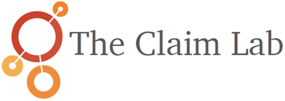June 2015 – Predictive model used by Florida’s DJJ
The Claim Lab uses predictive models to assess the outcomes of disability and workers compensation claims, but we are excited to see that this technology is starting to be picked up across a range of different sectors.
I read this article on the Chronicle of Social Justice last week about Florida’s Department of Juvenile Justice(DJJ), which looks like it will become the first state to use this sort if assessment technology to process its data to better predict outcomes and find patterns in data.
The process sounds very similar to what we do here at the Claim Lab to analyze the effectiveness of a process. For application of intervention services on a claim, its important to understand what process works and what does not, so the use of that service can be cost justified. A predictive model is used taking account of a number of different data points to figure out future behavior. In the Claim Lab’s case, we are trying to figure out the likelihood of a return to work, Florida’s DJJ is trying to figure out the best way to reduced levels of incarceration without increasing risk to the community. This means, figuring out which individuals are able to participate in community based programs for rehabilitation and those that need more structured and more expensive residential programs.
Again the similarities to the insurance world is stark. There are the low risk claims and high risk claims which are easier to predict outcomes for. It is the mass of claims in the middle where decisions are trickier. Likewise, there are obvious pathways for low and high risk individuals, but the Florida DJJ needed better analysis on the moderate and moderate-high categories.
Through their predictive model (which they were keen to emphasize was used in conjunctions with more traditional evaluation methods) 19% of youths were classified as ‘moderate risk’ compared to the previous methods which classified 11% as moderate. The predictive model put 8% of youths in the two higher (moderate-high and high), compared to the 17% that the previous model assigned to these.
Whilst Florida DJJ are still doing work to figure out how to use the data and ensure that the model is working most efficiently, this is another example if the power that predictive modelling can hold across a range of sectors.
To read this article in full, click here.
